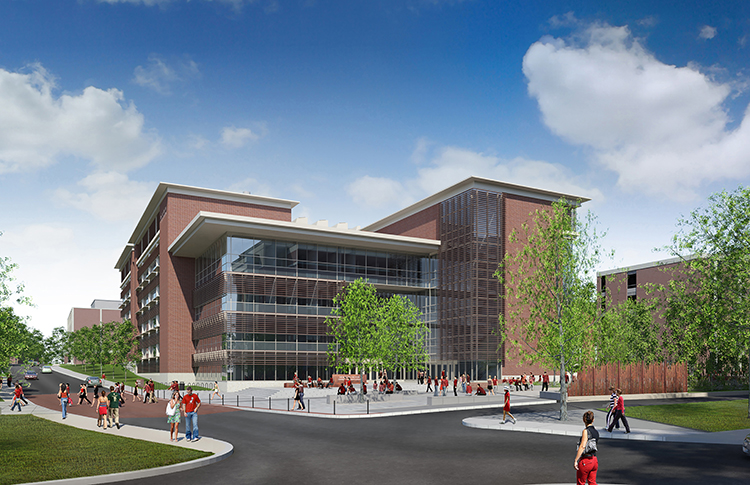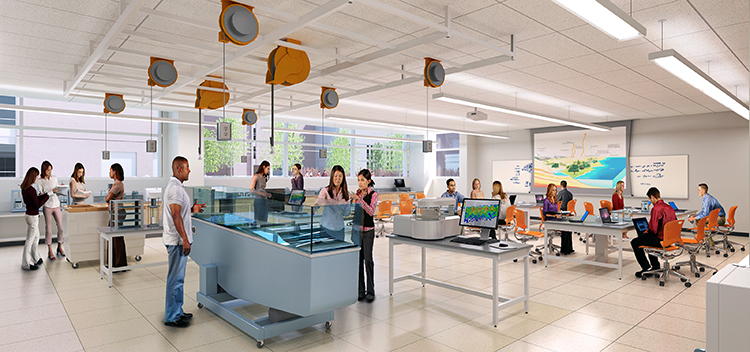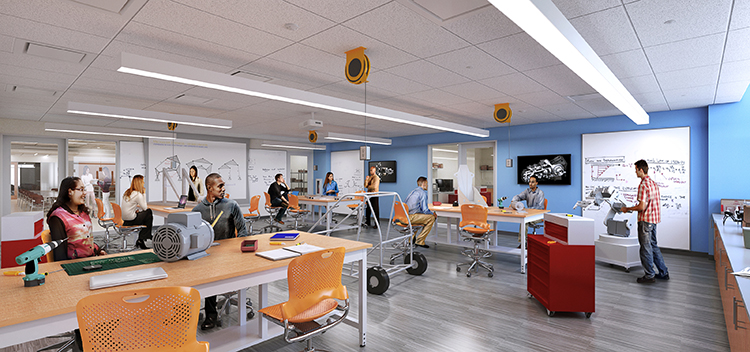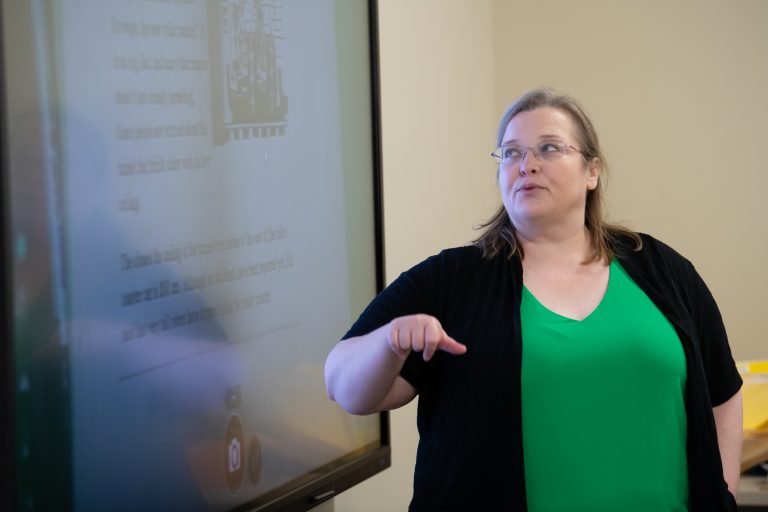
The Jim and Thomas Duff Center for Science and Technology Innovation, in the Science District of the University of Mississippi's Oxford campus, is on track to open in fall 2024. Construction began a year ago and is approaching the halfway point.
Largest academic building in UM history to feature innovative lab spaces, TEAL classrooms
Imagine standing in the atrium of the largest academic building in the history of the University of Mississippi’s main campus. Looking up, four floors of laboratories and lecture halls are all dedicated to increasing STEM student success and teaching.
This vision is quickly becoming a reality as the Jim and Thomas Duff Center for Science and Technology Innovation is approaching 50% complete, and on track to open in fall 2024.
“This space will be a fantastic space,” said Chad Hunter, associate university architect. “It’s an incredible building because of its function, but also simply because of its size.”
The 202,000 square-foot facility will support science, technology, engineering and math-related endeavors at the university. It will include classrooms with low student-instructor ratios, as well as state-of-the-art undergraduate lab spaces. The building is anticipated to be one of the nation’s top facilities for STEM education.
Kurt Shettles, president and CEO of McCarty Architects, is the project’s architect of record. He said the center stands out among other buildings at Ole Miss because of its interdisciplinary nature and the broad audience that it will serve.
It is unique in many ways, one of which is the teaching style that it supports.
“We’ve used the term ‘Swiss watch’ when referencing the science labs in the building,” Shettles said. “They are extremely intricate and designed for flexible teaching pedagogy.
“We have ‘TEAL’ classrooms, which are technology-enabled active learning classrooms. They support a different method of instruction with less lecture and more demonstration and participation. The students learn through the technology and the process of interacting and collaborating with each other, while the professor is more of a participant in that process, as opposed to just standing in front of the classroom lecturing.”
The Center for Science and Technology Innovation will include more than 50 TEAL classrooms, traditional labs and classrooms to accommodate some 2,000 students at any given hour throughout the day, Hunter said. It will also have a dedicated center for success and supplemental instruction, study rooms, a food service venue, more than 60 faculty offices and a 3D visualization lab, which is like a small IMAX theater.
The building is in the heart of the UM Science District. Construction is presently focused on the exterior – tasks such as installing windows, weatherproofing, waterproofing and laying brick. Once the exterior walls and roof are completed in the next couple of months, construction will begin on interior walls and finishes.
Cristiane Surbeck, chair and professor of civil engineering, can see the construction from her office window. She is eagerly anticipating the opening, which will have a major impact on her department.
“I’ve been taking a photo of it almost every day,” Surbeck said. “It’s going to provide a big upgrade to the teaching spaces that we have now. There’s going to be a specific room for civil engineering students to work on their senior design projects. It’s laid out for them to be able to work together in a space that is dedicated just for them.
“We are also going to have a water resources engineering and environmental engineering teaching lab that our students are really going to be able to take advantage of. It can even be shared among different departments if they have students who are doing experiments with water and environmental pollutants.”
The center will be an asset to the university community – especially its students, Surbeck said.
“I’m proud that we will have such a modern building that we are going to use to educate our engineering students,” she said. “I believe our engineering students are going to feel the same way. They are going to feel confident to go out and practice as engineers, having been educated in a such a high-quality facility.”
A new animated walk-through of the building’s interior gives viewers a better sense of the layout.
“You can see all four floors from the atrium; you can orient yourself by standing in it,” Hunter said. “The laboratories also have large windows, so you can observe what’s going on inside.
“It was designed this way on purpose to promote collaborative and interdisciplinary teaching and learning.”
Shettles said he hopes that once the center opens, students will find a home there.
“As designers, the best compliment we could receive would be to see students using this building even if they don’t have a class there,” he said. “We would love it to be a hangout destination for students simply because of the quality of the interior and exterior spaces, and because it promotes engagement and collaboration.”
Brothers Jim and Thomas Duff, of Hattiesburg, have committed $26 million to the construction of the building. The total project cost is $175 million, with $135 million in construction expenses.
Hunter has been part of the project since it was first imagined some 10 years ago.
“It’s a major honor to be part of this project,” he said. “To work so long on something and then seeing it actually being built is amazing.”
By Erin Garrett






